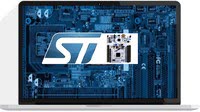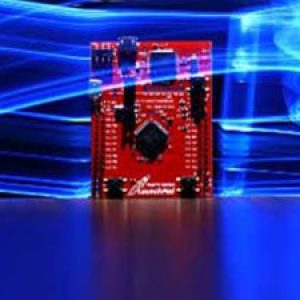
Are you tired of Copying and Pasting code you don’t understand?
With a programming based approach, this course is designed to give you a solid foundation in bare–metal firmware development for ARM–based microcontrollers . The goal of this course is to teach you how to navigate the microcontroller reference manual and datasheet to extract the right information to professionally build peripheral drivers and firmware. To achieve this goal, no libraries are used in this course, purely bare–metal embedded–c and register manipulations.
Still keeping it simple, this course comes in different ARM Cortex–M development boards so that students can put the techniques to practice using an ARM Cortex–M development board of their choice. This version of the course uses the STMicroelectronics STM32F4–NUCLEO which has an ARM Cortex–M4 microcontoller.
So with that understood, let me tell you&
Exactly What You’re Getting
This is dramatically different from any course you have ever taken because it’s more of a professional hands–on “field guide” to stm32 bare metal firmware development.
The reason why is because there’s no fluff or filler. It immediately gets down to the actual subject, showing you exactly what to do, how to do it, and why.
Plus, it’s easy.
And you’ll immediately “get” the entire mythology I personally use to build firmware for consumer devices in my professional life.
Instructor Details
Courses : 10
Specification: Embedded Systems Bare-Metal Programming Ground Up™ (STM32)
|
9 reviews for Embedded Systems Bare-Metal Programming Ground Up™ (STM32)
Add a review Cancel reply
This site uses Akismet to reduce spam. Learn how your comment data is processed.

$109.99 $18.99







Dion Damato –
So far the course is as I expected, and I’m getting a lot out of the material.
Erick Bezerra de Carvalho –
The first classes about GPIO were good as an introduction and shows the importance of the reference manual. However, the attention with reference manual all goes down in the next lectures. The lecturer shows the project set up (that is the same in all classes on Keil) but don’t show where and why he is using some registers. When introducing a new register at least he should show that on the reference manual and explain it briefly. Otherwise, it requires a lot more from the student to undertand the lecture by using external sources to complete the topic’s theory. on UART section, the lecturer don’t even explain how to calculate the baud rate on the project and just say something like 86991 is a common value for the baud rate because it gives us Y and then continue the project without furthermore explanations. The vast majority of the register were not explained. on Timer section, the problems just got worse. In one of the lectures, he says something like lets use TIM2 >CCMR1 0x30 to confugure as output, but in that line he enabled output and set the value of the output. It would be much better if he breaks it in two steps like TIM2 >CMTR1 & (0x3) and TIM2 >CCMR1 | 0x30, because 2 different actions were done there indeed. Use other sources is a must if you want to understand some lectures of this course. The lecturer doesn’t respond the Q&A afterall (I sent two questions 5 days ago and they don’t get answer).
Matt Pamenter –
The course is decent but if you run into problems, as you can see from the Q&A, it’s unlikely the instructor will be able to help or in most cases even bother to respond to you.
Sachin verma –
go through(I have noticed that you haven’t answered any question in comment section, why don’t you reply);
Hannu Hirvonen –
Good idea to use 3 different vendor chipsets 🙂
Hussamaldean –
the explanation is clearer than crystal
Saffetblt –
very nice 🙂
Vesa Mattila –
just what I was looking for
Vivek Kolandairaj –
It is a very good course. The instructor takes you deep into the STM32 registers and explains step by step how to program the microcontroller at register level.